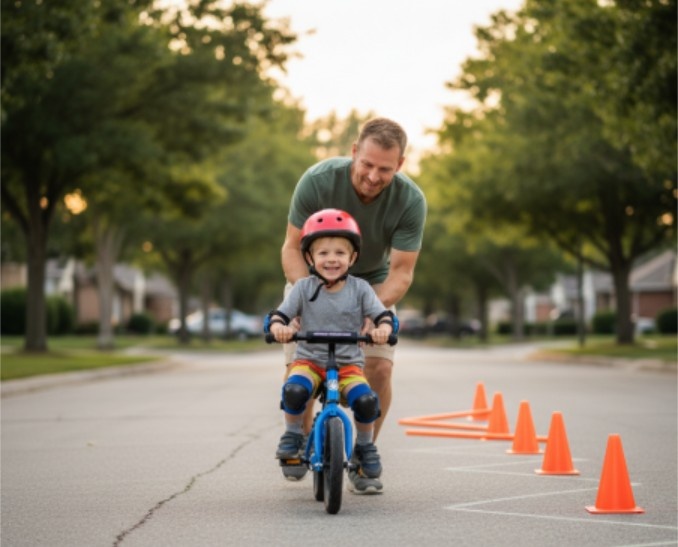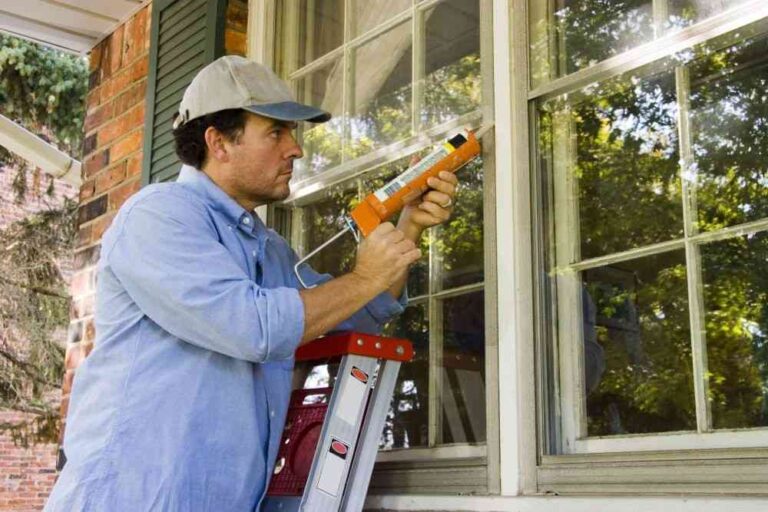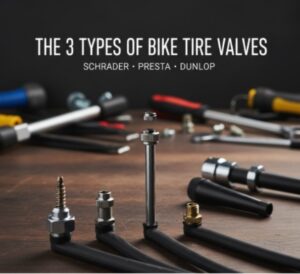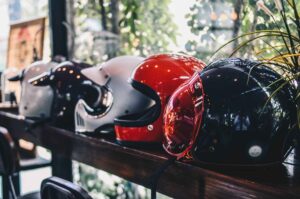I’ve rebuilt engines, tuned carburetors, and even fixed a gearbox on the side of the road—but nothing tested my patience like showing my nephew how to ride his first bike.
The thing is, once I approached it like any other machine—piece by piece, system by system—it all started to click for him.
If you’re wondering how to teach a kid to ride a bike without it ending in tears (theirs or yours), here’s the method that finally worked for us and actually made it fun.
How Do You Set Up the Bike for a Kid to Learn?
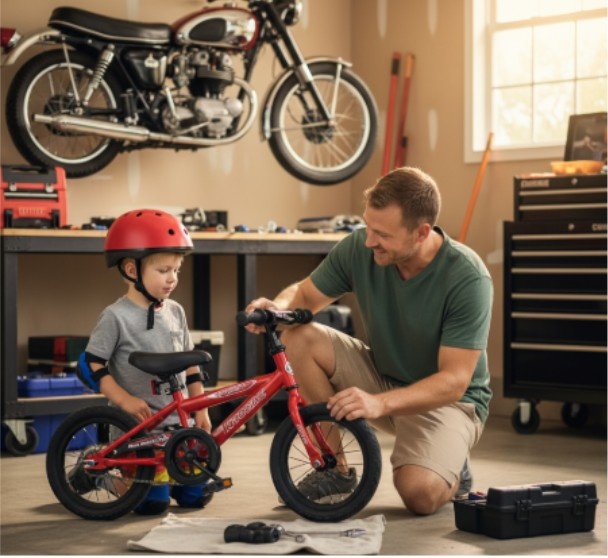
The first thing I do when introducing a kid to bikes is treat it like setting up a new vehicle. Fit matters more than flash. If the bike’s too tall, they’ll feel wobbly from the start.
The seat should be low enough so they can sit and place both feet flat on the ground. This gives them a sense of control, which is everything when they’re learning.
I like starting with a balance bike if they’re younger (around 3–5 years old). If they’re older, I just remove the pedals from a regular bike. It instantly becomes a balance trainer without having to buy something new.
Think of it like stripping a motorcycle down to its frame to help someone understand how it works—same principle, simpler system.
And don’t forget safety gear. A helmet is a must. Make sure it sits level on their head, covers their forehead, and the chin strap fits snug.
Optional pads can save you a few bandage runs too. Once you’ve got the right setup, they’ll feel safer, and you’ll feel more relaxed.
Where’s the Best Place to Teach a Kid to Ride a Bike?
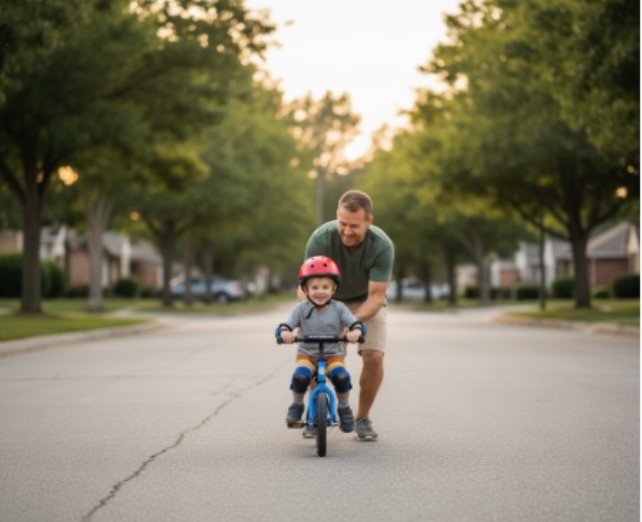
Location makes or breaks the first lesson. I’ve tried grassy yards, but tires sink, and momentum disappears fast. Kids need smooth ground to keep rolling and learn how the bike behaves.
I always go for a quiet cul-de-sac, an empty parking lot, or a paved park trail. These spaces give them room to wobble, weave, and figure things out without dodging traffic. They also allow you to walk alongside them without tripping over curbs or tree roots.
Pick a calm day for the first session. Too much wind or noise can make them tense. When the environment feels safe, they stop worrying about falling and start focusing on balance. That confidence boost is half the battle.
How Do You Teach Balance Before Pedaling?
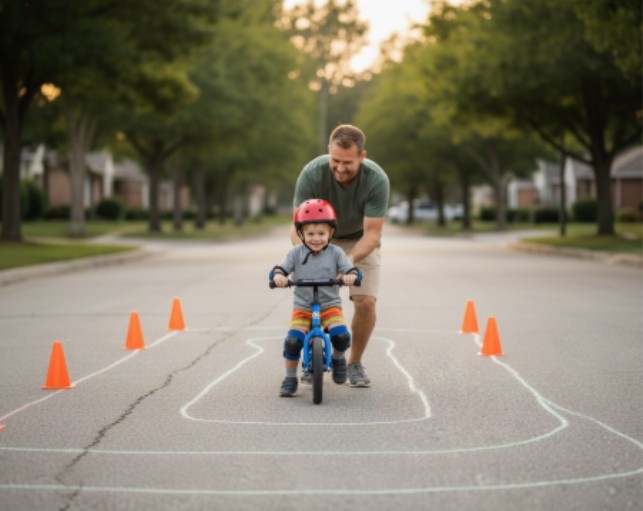
Balance is the heart of riding. Get this right, and pedaling becomes easy. Here’s how I break it down:
Walk the bike
Have your kid sit on the saddle (with pedals removed) and walk it forward using their feet. This gets them used to the weight and movement without the stress of speed.
Scoot and glide
Next, encourage them to push harder with their feet and lift their feet off for a second or two. Short glides become longer glides. Celebrate every improvement—they’re learning how the bike responds to their body.
Steer while gliding
Once they can coast a bit, I add steering practice. Ask them to look ahead and gently turn the handlebars.
I sometimes set up a mini “track” with cones or chalk lines. It makes it fun and teaches how leaning affects balance.
Always support the child, not the bike. I keep a light hand on their back or shoulder while jogging beside them.
Holding the handlebars or seat can actually throw off their balance. They need to feel the bike’s movements for themselves.
When Should You Add Pedals and Brakes?
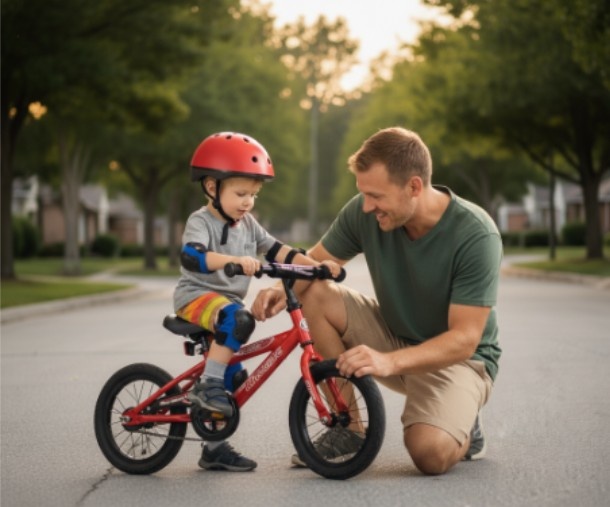
Once your kid can glide for several seconds, it’s time to reattach the pedals. Raise the seat so only their toes touch the ground while sitting—this gives them full leg extension to pedal comfortably.
Teach them the “power position.” Put their dominant foot’s pedal at about the 2 o’clock position. Have them push down hard while placing the other foot quickly on the opposite pedal. It’s like starting a small motor—you need that first burst of torque.
Before they gain real speed, teach braking. If they have coaster brakes, explain pedaling backward to stop. If they have hand brakes, practice squeezing the levers gently.
Then have them combine braking with putting both feet down. Knowing how to stop safely builds trust, and trust builds confidence.
How Do You Build Confidence Through Practice?
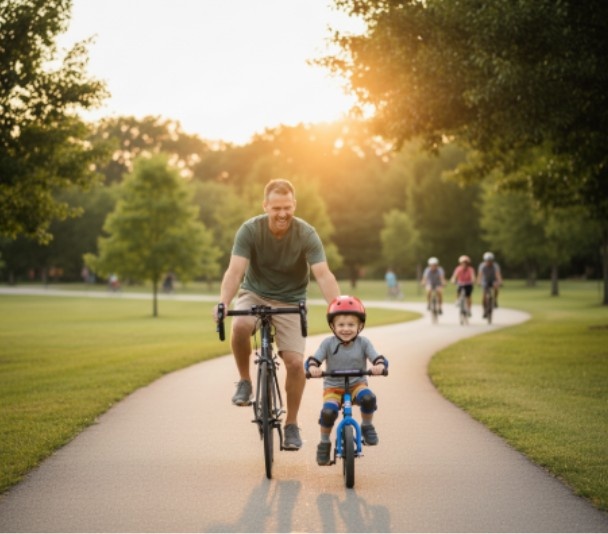
Once they’ve got the basics, it’s all about repetition—with plenty of encouragement. I like to make small obstacle courses with wide turns to help them practice steering. Keeping it playful keeps them engaged.
Short sessions work better than long ones. Ten or fifteen minutes at a time avoids fatigue and frustration. End on a high note—quit while they’re still smiling, not when they’re ready to cry.
And ride with them. There’s something magical about seeing you on a bike beside them. It reminds them that riding isn’t just a skill—it’s fun, freeing, and part of the adventure.
Once they’ve nailed short rides in your quiet spot, take them on an easy bike path. The sense of accomplishment they feel will blow you away.
How to Teach a Kid to Ride a Bike: Quick Step Table
| Step | What to Do | Why It Works |
| Setup & Safety | Fit bike, lower seat, add helmet | Builds security and control |
| Balance Practice | Walk, scoot, glide, steer | Focuses only on bike handling |
| Add Pedals & Brakes | Teach power position and stopping | Gives them propulsion and safety tools |
| Confidence Building | Playful rides and short sessions | Reinforces learning without burnout |
FAQs About Teaching a Kid to Ride a Bike
1. How long does it usually take for a kid to learn to ride?
It depends on their age and comfort level, but most kids can pick it up within a few sessions if you focus on balance first.
Some nail it in 30 minutes, while others need a few days. The trick is consistent, short practice without pressure.
2. Should I use training wheels?
I don’t recommend them. Training wheels prevent the bike from leaning, which is the key to balance.
Balance bikes or removing the pedals works far better because kids learn the actual feel of riding from the start.
3. What if my child is scared of falling?
Start slow, on flat ground, and keep your hand on their back to reassure them. Show them how to stop with their feet.
Once they feel they can control the bike and stop anytime, their fear usually fades fast.
4. What age is best to teach a kid to ride a bike?
Ages 3–6 are ideal, but it’s never too late. Younger kids often adapt quickly because they’re less afraid of falling, while older kids may just need more encouragement and patience.
Riding Off Into the Sunset (Without the Drama)
Teaching a kid to ride a bike can feel like trying to tune an engine that keeps sputtering—but when it finally roars to life, it’s magic.
Watching their face light up when they take off on their own is one of the best feelings I’ve ever had, even better than getting an old motor to run again.
Keep it short, keep it fun, and keep cheering. If you stay calm and break the process down, they’ll get it—and you’ll both walk away with a memory worth holding onto.
Now grab that wrench, drop those pedals, and get ready to run alongside them—you’ve got this.

